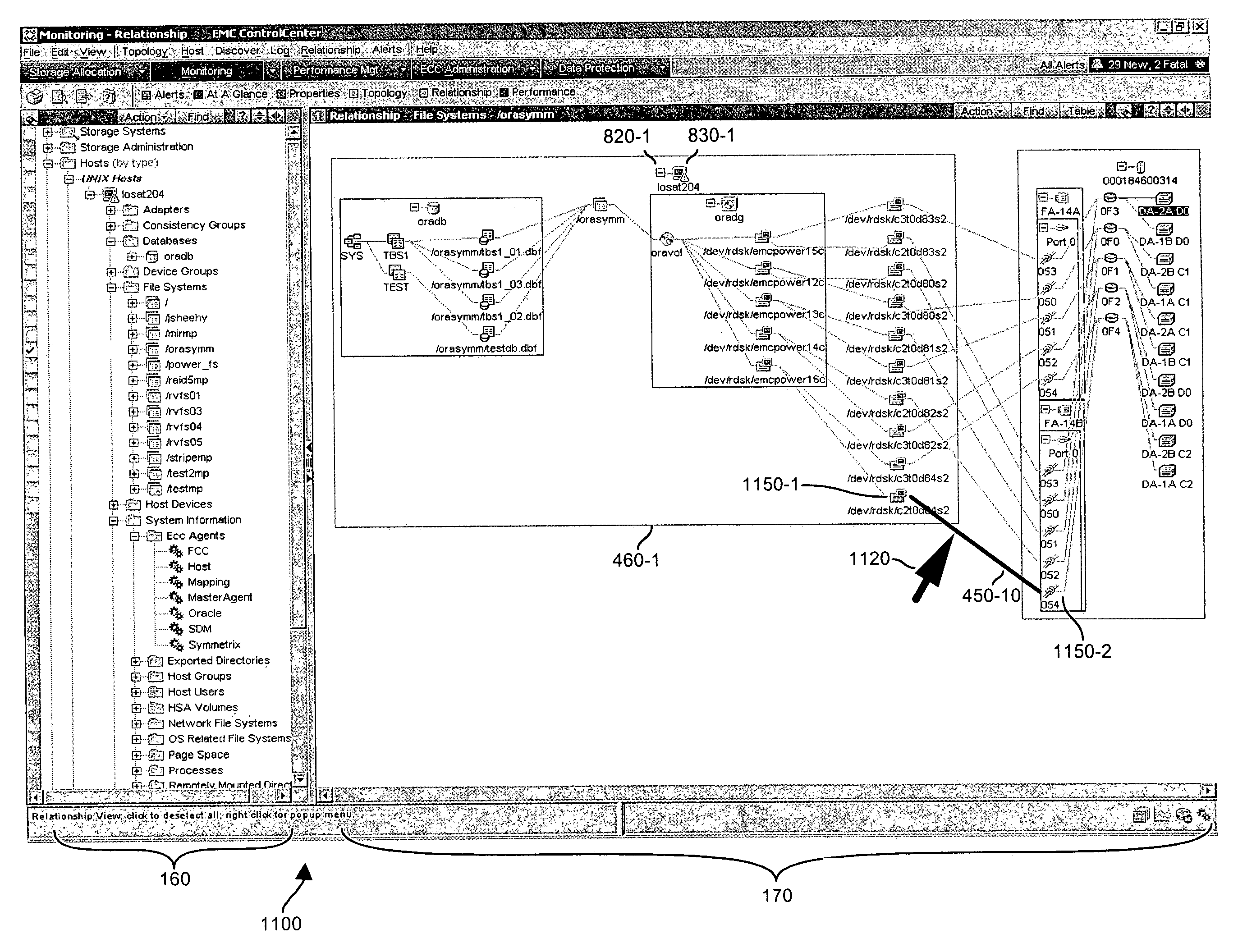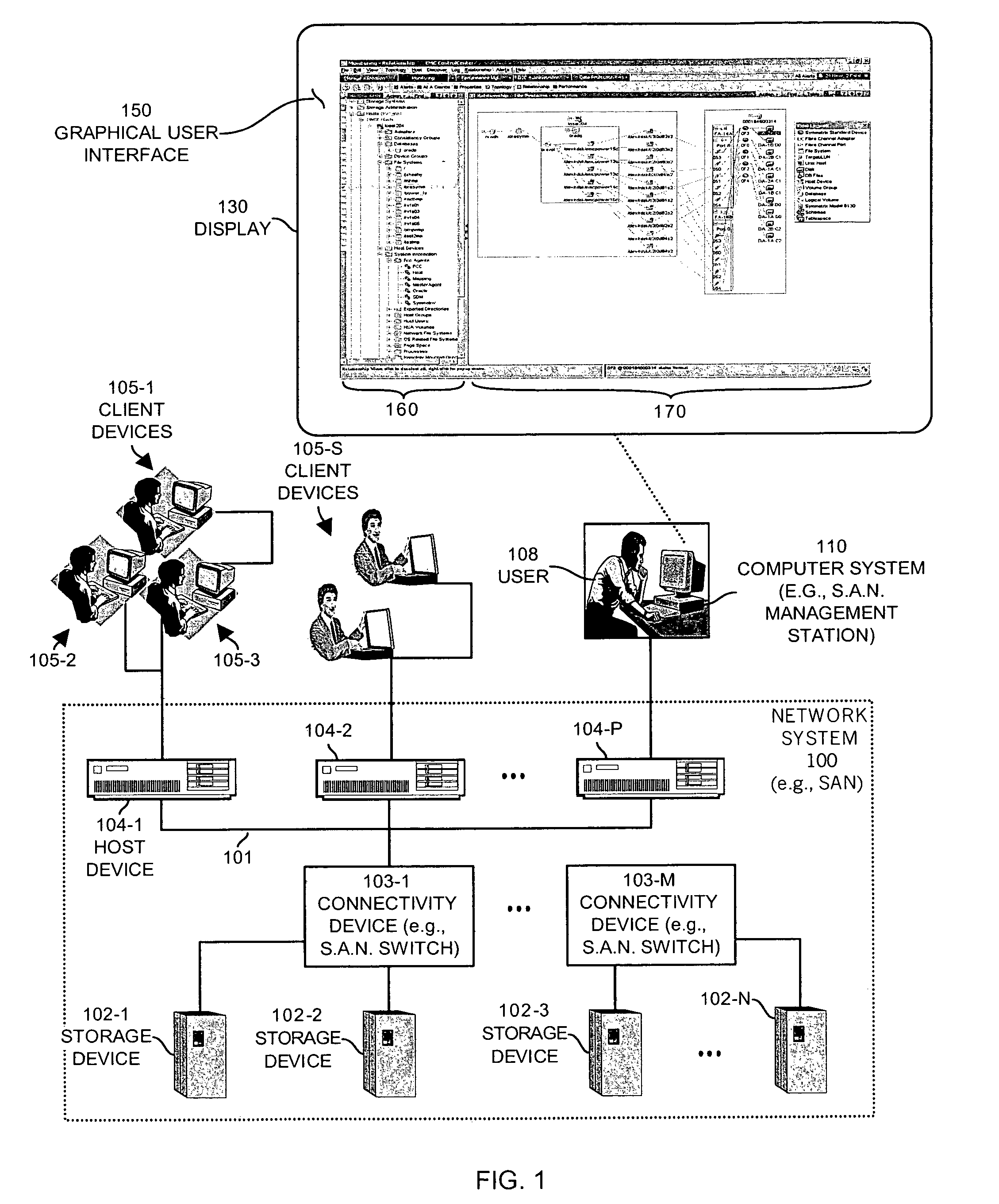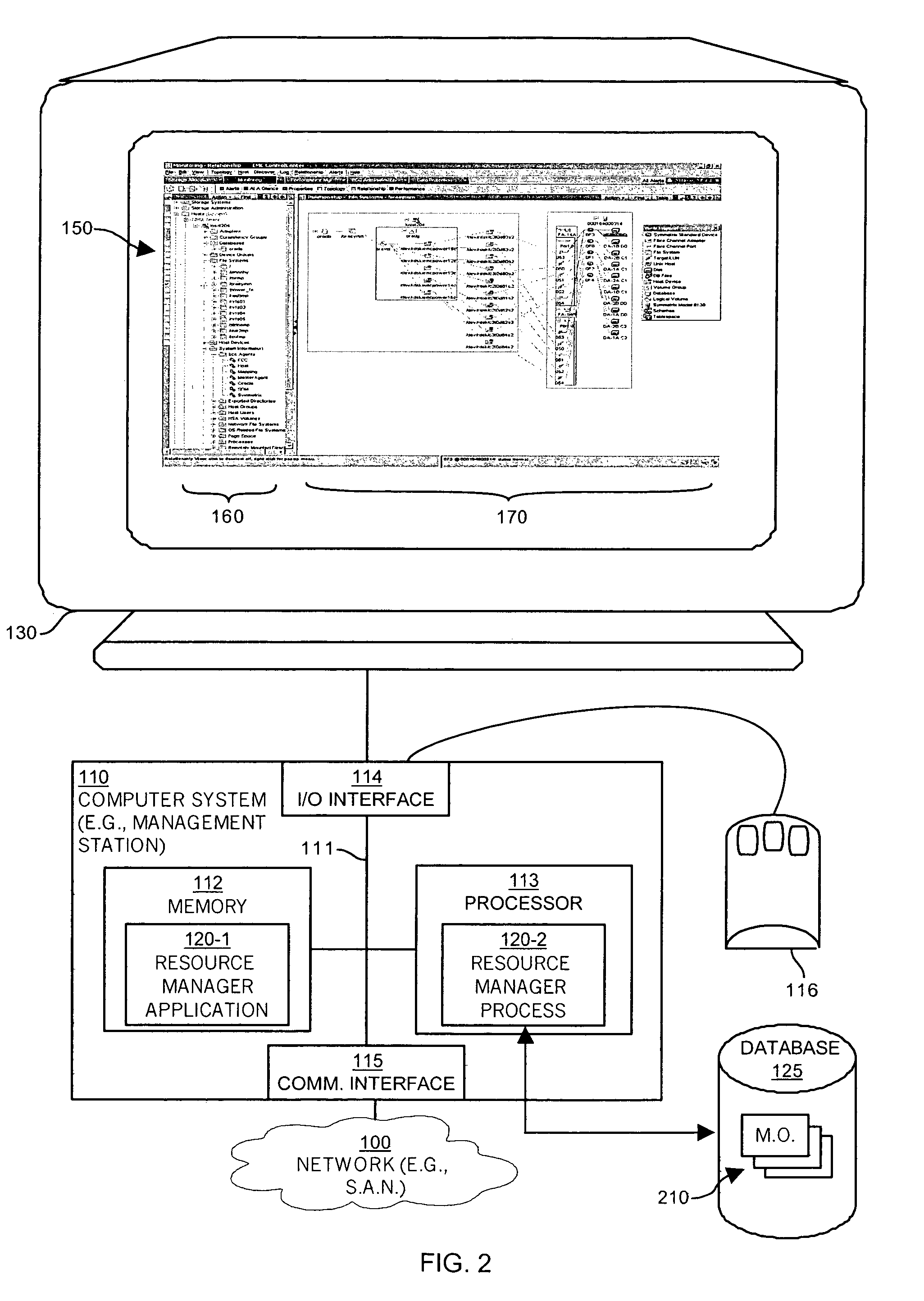Methods and apparatus for managing network resources via use of a relationship view
a network resource and relationship view technology, applied in the field of relationship view management methods and apparatus, can solve the problems of inconvenient network management software applications that graphically display physical connectivity among network resources, and inconvenient use of network topology views. achieve the effect of quick identification, easy identification of managed entities, and quick identification
- Summary
- Abstract
- Description
- Claims
- Application Information
AI Technical Summary
Benefits of technology
Problems solved by technology
Method used
Image
Examples
Embodiment Construction
[0037]Embodiments of the invention include a processing device that generates a relationship view including managed entities associated with a storage area network based on corresponding objects stored in a relational database. For example, a management database tracks relationships among managed hardware and software entities via use of corresponding managed objects. Each managed entity in the storage area network has a corresponding managed object stored in the relational database. Generally, managed objects of a particular type are categorized into one or more tables. The tables are related to one another by foreign key attributes, which indicate relationships between types of managed objects (and thus a relationship between corresponding managed entities). Relationships between the managed objects in the relational database may be generally classified as either association or containment. Association identifies a logical relationship between managed objects. Containment identifi...
PUM
 Login to View More
Login to View More Abstract
Description
Claims
Application Information
 Login to View More
Login to View More - R&D
- Intellectual Property
- Life Sciences
- Materials
- Tech Scout
- Unparalleled Data Quality
- Higher Quality Content
- 60% Fewer Hallucinations
Browse by: Latest US Patents, China's latest patents, Technical Efficacy Thesaurus, Application Domain, Technology Topic, Popular Technical Reports.
© 2025 PatSnap. All rights reserved.Legal|Privacy policy|Modern Slavery Act Transparency Statement|Sitemap|About US| Contact US: help@patsnap.com



